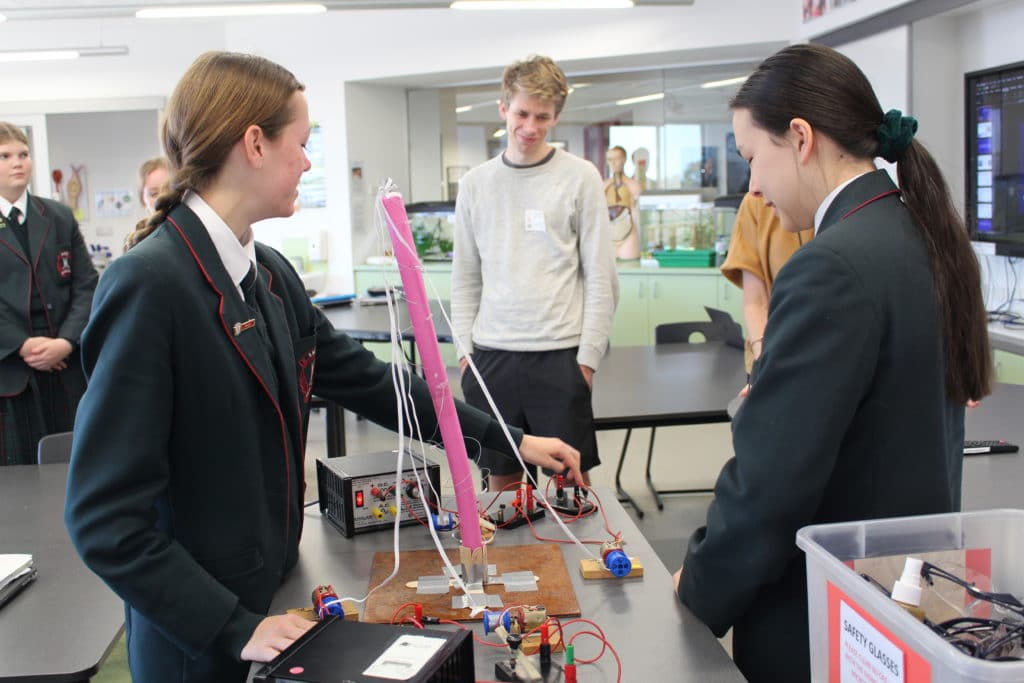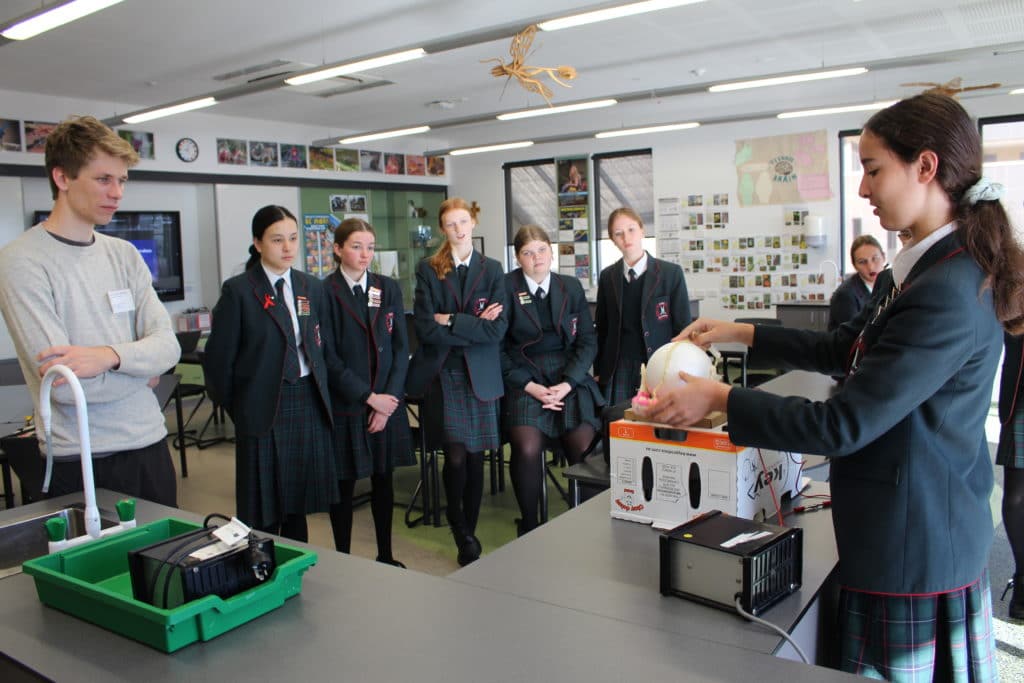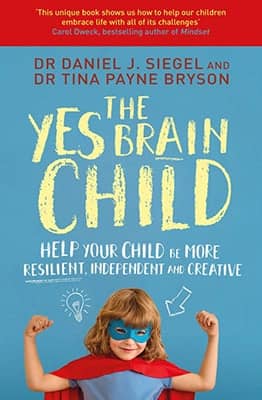Students Create Bionic Body Parts

BrainStem students are currently working on a project designing bionic body parts, such as bionic hands, legs, and sensory organs like the eye and ear. The girls are researching how their selected body part is normally coordinated by the brain. Then they are designing a way for their bionic part to interface with a person’s existing nervous system to enable the artificial part to function like the real thing
To complement this project, a Ph.D. researcher from UWA, Nicholas Lawler came to talk to students about his science research pathway. Nicholas started with a degree in physics and engineering and is now applying these disciplines to his study of neurons.
Nicholas outlined for our students how he is investigating the way electrical stimulation affects the differentiation of stem cells in the brain. As the BrainStem students knew from their work on brain wave monitoring, nervous system tissue communicates largely through electrical signalling.

During Nicholas’ time with the students, they were tasked with forming scientific questions that would have to be considered before starting this sort of research. For example:
- determining what type of brain cells would be the best group of cells to target for this research and why?
- whether this research could be conducted on cells grown in the lab or whether it would need to be carried out in a living organism? And,
- the ethical considerations of these questions.
Students also had to question how the electrical signals could be delivered, given that cells are extremely small.
The interrelationship between science disciplines highlighted in Nicholas’ visit, provided another example of possible career pathways open to science students.

The Power of Expectations in Shaping Student Success – Jennifer Oaten
Discover the transformative impact of expectations on student success. Learn how belief shapes outcomes in education and beyond.

Weekly Wrap Up: Term 2, Week 1, 2024
Term 2 has kicked off with a bang! We enjoyed the Year 11 Father-Daughter evening, celebrated Earth Day, and welcomed Dr. Mark Williams.

Inspiring Change: Earth Day 2024
Our Earth Day celebration this week was a powerful reminder of our collective responsibility to protect our planet for future generations.
- Featured, Learning4Life
Author: Santa Maria College
Santa Maria College is a vibrant girls school with a growing local presence and reputation. Our Mission is to educate young Mercy women who act with courage and compassion to enrich our world. Santa Maria College is located in Attadale in Western Australia, 16 km from the Perth CBD. We offer a Catholic education for girls in Years 5 – 12 and have 1300 students, including 152 boarders.






